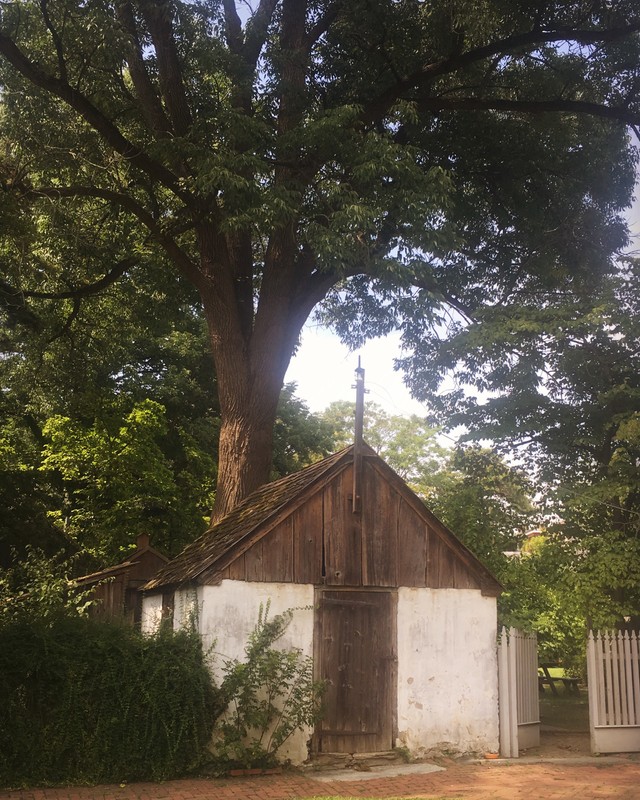Wyck's Smokehouse
Introduction
Text-to-speech Audio
Images
The smokehouse front

Backstory and Context
Text-to-speech Audio
In 1790, Philadelphia was devastated by the Yellow Fever epidemic. Wyck's fourth generation owners, Reuben Haines I and Margaret Wistar resided in downtown Philadelphia. Both Reuben and Margaret succumbed to the fever, leaving their country home, Wyck, in the possession of their son, Caspar Wistar Haines. Upon his inheritance, Caspar moved his family to Wyck to escape the contagion running rampant in the city. It was in this historical moment that this smokehouse was constructed. When Caspar and his wife Hannah arrived they immediately set to work updating the family home. They united the front and back buildings and stuccoed the exterior of the main house, they erected a coach house for their carriage, and they built the smokehouse to store and cure meat.
